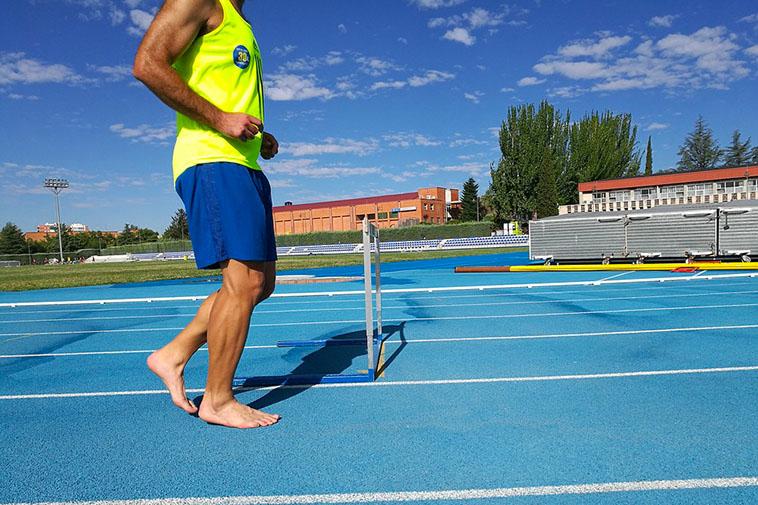The Pros And Cons Of Barefoot Running

Most runners spend ages choosing the perfect pair of sneakers, but now more people than ever before are opting for barefoot running instead. With advocates claiming that barefoot running improves your foot biomechanics while slashing the risk of injury, what are the actual pros and cons of changing to the new way of getting fit?
The Barefoot Debate
Some experts have agreed that wearing shoes when running can weaken the smaller muscles in your feet, preventing the ligaments, arches and tendons from functioning properly. Orthotics, supporting inserts for shoes and extra cushioned soles may actually cause poor foot biomechanics and may increase the chance of suffering a knee, leg or foot injury.
On the other hand, some have argued that wearing the right pair of running shoes can correct existing biomechanical problems, thus reducing the risk of injury. Until there is more research out there, it’s impossible to determine the truth about whether wearing sneakers while running can help or harm the health of your feet, but there are a few clear advantages and disadvantages.
What Are The Pros?
- Barefoot running can strengthen your feet and your gait.
- It can reduce the number of injuries you experience.
- It forces runners to use the right technique.
- It could improve your proprioception and balance.
- It gives you a greater connection with your running surface.
What Are The Cons?
- Your feet have little protection from hazards.
- It could increase calf strain and Achilles tendinitis.
- Plantar pain may be increased.
- You may be more likely to suffer from blisters.
- You will look strange.
- It will feel uncomfortable at first.
The Benefits In Depth
If you’re ready to start barefoot running, here is a more in-depth guide to the potential benefits:
- When you go barefoot, your gait becomes more natural and the tendons, ligaments and muscles in your feet become stronger. When the heel lift is removed that most shoes supply, your calf muscle and Achilles tendon are able to lengthen and stretch and this reduces the chance of injuries occurring such as Achilles tendinitis and calf pulls which are caused by tight, short tissues.
- You’ll learn how to land properly on the front and mid-sole of your foot instead of your heel. When you wear running shoes, you tend to heel strike due to the excessive padding that sneakers have. This isn’t the best running stride since landing on your heels puts a brake on each step. Efficient runners will land on their midfoot so their strides stay light, flowing and smooth. Also, landing on the front part of the foot lets the arches function as a natural shock absorber.
- Your proprioception and balance may be improved since the small muscles in the legs, hips, ankles and feet become activated, helping to improve your coordination and balance.
- You’ll feel more grounded with a better connection to the environment. You will learn how to spread the toes and expand the foot to turn it into a more connected and solid base which can support every movement.
The Problems
Suddenly switching to barefoot running can be a shock. You won’t be protected from cold weather or road debris. You may also experience pain in your feet, with blisters often forming. The solution could be to wear a minimalist shoe which mimics the feel of running barefoot.
